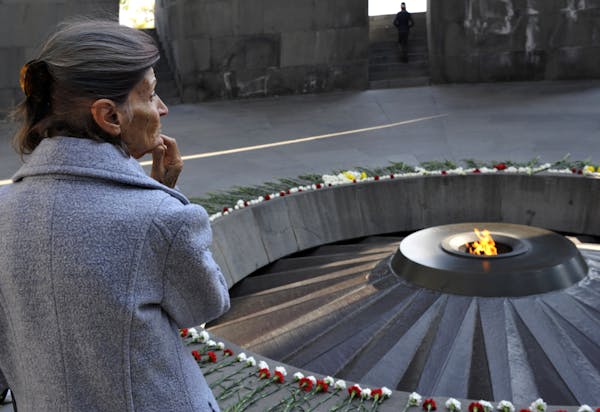In a perfect world, genocide would not exist. There simply would be no term for it. The concept of it would be unconscionable to us. In the U.S., history is seldom understood without an immense short-term memory lurking in the background. The narratives we receive about history are often dominated by vindictive prejudices that care little about impartiality, shared reciprocity and objectivity. Aspiring demagogues masquerading as our political leaders today do little to set the record straight. They join the popularized fray depending on what the prevailing narratives of world history are at the moment. If a historical narrative fails to fit into a concise and convenient sound bite of world history, it is ignored. Such a wide array of disinterest reflects on the American people. This does the nation no justice.
How many Americans have heard of the Circassian genocide that ravaged the North Caucasus from 1864 to 1867? In that event, 1.5 million Circassians experienced genocide, territorial expulsion and permanent displacement at the hands of czarist Russia under what became a bloody policy of Russification. Russia officially puts the death toll at a contestable 400,000. Today, Circassia exists as the Russian republic of Adygea, with most its people displaced the world over. As a direct link to the genocide, the king of Jordan is protected by an elite corps of Circassian guards. They were sought for their fierce reputation as skilled soldiers. What role did czarist-aligned Armenian nationalists play in the genocide of Circassians?
Unbeknown to many Americans, there is a monument outside the International Criminal Court at The Hague in the Netherlands that recognizes the Khojaly genocide. On Feb. 26, 1992, Armenian ultranationalists murdered in cold blood anywhere between 485 and 613 civilians in Azerbaijan's breakaway region of Nagorno-Karabakh. Armenian ultranationalists besieged Khojaly, cutting water, electricity, food and medical supplies from the city. To this day, the exact civilian death toll remains disputed and distorted. At present, Nagorno-Karabakh exists as an illegitimate de facto independent state complete with a self-proclaimed flag that mirrors the Armenian with one key distinction: a westward arrow symbolizing an unbreakable allegiance to Yerevan, Armenia's capital. The purported goal of the ultranationalists is to reunite the breakaway region with Armenia in hopes of rectifying a greater regional homeland.
In addition, how many Americans have heard of the Armenian Secret Army for the Liberation of Armenia? Although the group is largely inactive, with a majority disbanded membership, the organization engaged in numerous terrorist activities. The ASALA acquired quite the reputation by staging assassination attempts on Turkish diplomats, their personal associations and families. However, the Orly Airport attack in Paris in 1983 is most distinguishable out of all. The attack on the Turkish Airlines kiosk resulted in eight dead and 55 injured. The ASALA acquired a taste for threatening acts of terrorism against nations that chose not to adopt the popular narrative supporting the Armenian genocide. This also applied to nations that maintained strong Turkish relations.
The expanse of the Ottoman Empire began in 1299 and ended in 1924. That is 625 years of history. The Ottoman state was a cosmopolitan empire consisting of multiple ethnicities exceeding those of the Austro-Hungarian Empire. Armenians played a pivotal role in the intellectual, scientific and cultural development of the Ottoman Empire. The haughtiest proponents of the Armenian genocide are dedicated to convincing popular opinion that anything associated with the Ottoman Empire is antithetical to the Armenian identity. Here are some interesting facts worth considering: Güllü Agop (1840-1902) was an Ottoman Armenian playwright who founded modern Turkish theater. Imagine! An Armenian responsible for a major aspect of Turkish culture! Hagop Baronian (1843-1891) was an influential literary artist most famous for his shrewd satirical work. "Oriental Dentist" (1868) stands as a pristine example of his cunning depictions of life's imperfections in late-19th-century Constantinople. Never mind the fact that numerous advisers to various sultans throughout Ottoman history were Armenian.
Here is something worth considering: How many Armenians perished under Soviet communism, particularly under Stalin? Why is the subject of the Armenian Genocide exclusively tied to the Ottoman Empire without one equal to the atrocities inflicted against Armenians in the former Soviet Union?
Let it be known that the Ottomans were not perfect. There were bad actors who committed ethnic crimes as the empire was consumed by the chaos of World War I. However, the legacy of the Ottoman Empire is not reducible to one dark episode of history that primarily manifested as an act of war where alleged death tolls are at best shared, contestable and, in many cases, disproportionate when historically rectified and compared.
Omar Alansari-Kreger, of Richfield, is a Muslim-American activist and paratransit specialist.
Cut down on electronic waste in Minnesota
In Minnesota, statistical gloom amid the hope of a progressive-led boom


